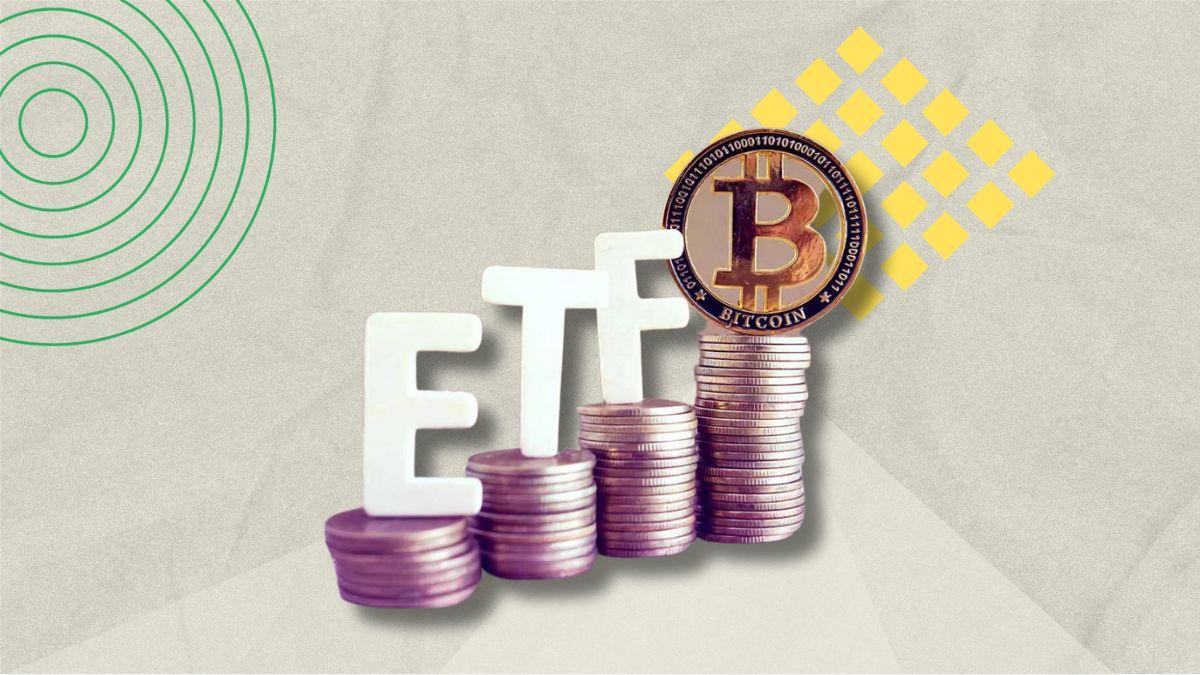Is Cryptocurrency the New Gold? Bitcoin ETFs target increased U.S. interest

3 min
Bitcoin ETF Surge: Can it mirror Gold's lucrative legacy?
U.S. regulators mull over approvals as Bitcoin ETFs seek to capture Billions in investment.
Traditional investors are divided on Bitcoin's value despite rising ETF interest.
Bitcoin, the trailblazing cryptocurrency, is barreling towards the core of traditional finance with the advent of an ETF (exchange-traded fund) that follows its market price. The question on everyone's mind: will it be as lucrative as Gold has been for investors?
October has witnessed a dramatic 28% surge in Bitcoin's value, spurred by speculation that the U.S. regulators might endorse a spot Bitcoin ETF, potentially catalyzing a fresh influx of institutional demand.
Estimates of how much capital such an ETF could attract vary widely among industry experts, with predictions spanning from a $3 billion opening day to $55 billion over the next half-decade.
Dave Mazza, Chief Strategy Officer at Roundhill Investments, draws parallels between the transformative effect of gold spot ETFs and the potential impact of Bitcoin spot ETFs. He predicts a substantial initial buying spree comparable to the first U.S. gold ETF in 2006 and the Bitcoin futures ETF in 2021.
Heavyweights of the investment world, including BlackRock and Fidelity, along with crypto-centric entities like Grayscale, are lining up their applications for Bitcoin spot ETFs. The SEC has confirmed that it is deliberating on approximately eight to ten such applications, though the timeline for decisions remains under wraps.
On the flip side, traditional investors skeptical about cryptocurrency need to be convinced that new ETFs will ease their concerns about the asset's lack of inherent value. Investment advisor George Gagliardi firmly states that his clients' funds will steer clear of what he considers to be questionable investments.
Nevertheless, the anticipation surrounding a direct-exposure Bitcoin ETF has buoyed the cryptocurrency's value, with its price soaring to a high not seen since May 2022.
The methods used by analysts to project ETF demand vary significantly, from sizing up the gold ETF market to evaluating the appetite for existing crypto products. The inherent opacity of Bitcoin markets, heavily influenced by investor sentiment, adds another layer of complexity to these forecasts.
NYDIG, a crypto enterprise, places potential demand for a spot Bitcoin ETF around $30 billion, drawing comparisons between the market sizes and volatilities of Gold and Bitcoin ETFs.
Todd Sohn of Strategas Securities notes the rarity and difficulty in predicting demand for an entirely new asset class in the ETF sphere.
Complications with existing Bitcoin ETFs, linked to futures prices and can incur additional costs, have spurred investor interest in a more direct investment option.
Steven McClurg of Valkyrie Funds points to the Grayscale Bitcoin Trust's market cap as an indicator of immediate demand for a spot Bitcoin ETF.
Industry insiders suggest that a significant portion of demand could stem from financial advisors and pension funds, whose capital is estimated in the trillions. The entry of firms like BlackRock into the market could signal advisors and wealth managers to onboard such funds.
Matthew Hougan of Bitwise Investments envisions spot Bitcoin ETFs amassing $55 billion within five years, basing his outlook on the growth patterns observed in smaller markets like Canada.
Despite the optimistic projections, Steve Sosnick from Interactive Brokers cautions that not all contenders will thrive in the race for market share. He predicts a significant number of the current hopefuls may vanish from the landscape in just a couple of years.
The biggest stories delivered to your inbox.
By clicking 'Register', you accept Arageek's Terms, Privacy Policy, and agree to receive our newsletter.
Comments
Contribute to the discussion

